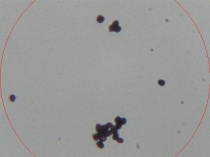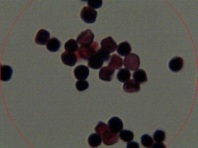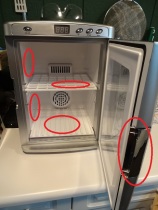I am thoroughly enjoying an online science course on beer. The professor, Dr. Mark Morvant from The University of Oklahoma, is leading a 16-week course on the Chemistry of Beer. Although well beyond any course I took in college (some 43 plus years ago), many of the discussion questions he poses are quite interesting.
The unit we are currently working on is titled, Health Impacts of Alcohol. Besides being crammed with scientific information and chemical equations, we are also reminded of the societal impact alcohol plays on the lives of individuals who overindulge. Thus, when Dr. Morvant posted the question, “Is it better to drink or not?”, it made me pause and think.
Before you read this, however, let me explain a little about my philosophy. I am an anarchist in the truest sense, not what modern media portrays. Thus my home brewery is know as, The Anarchist Brewhous. I believe that each person is capable of determining what is best in their life, and that each person should be allowed to live their life as they see fit. This, however, is not what media talks about. According to media, an anarchist is one who believes in chaos. That is further from the truth and is what stops most people from honestly looking into anarchism as a viable alternative to a highly regulated police State. Regardless, I do believe in law and order – both of which anarchy can provide. All true anarchists believe that any form of coercion or violence against an individual is wrong. We also believe that taking anything from another person without their consent is wrong. It then stands to reason that each individual should be able to do what they want as long as it does not impact the life of another.
After much consideration, this is what I posted on the Chemistry of Beer discussion board.
Making the assumption that this question is directed to the writer, my conclusion would serve only as antidotal evidence and opinion. However, taking this question to the generic “you,” an assertion could be made that abstinence from alcohol would benefit individuals and society in general. It is well documented that alcohol abuse can lead to many physiology problems that ultimately could negatively impact a person over their lifetime (CDC, 2013). Additionally, negative societal impacts can be quantified over many sectors, ranging from lost production hours to increased healthcare costs (CIBHP, 2009). Furthermore, data suggest many crimes are committed as a result of excessive drinking (NCADD, 2014). Assuming a person’s judgment is impaired after even one drink, (Segal & Duffy, 1999), a strong case could be made that total abstinence from any form of alcohol would benefit the individual and society as a whole.
Nonetheless, recent data suggest that moderate consumption of alcohol can provide health benefits. A recent study conducted by Oregon Health & Science University stated moderate consumption of alcohol boosts the immune system (OHSU, 2013). Other studies suggest people who are moderate consumers of alcohol show substantially reduced risk of coronary heart disease when compared to those who abstain from drinking alcohol and heavy drinkers (Rehm, Sempos & Trevisan, 2003).
In America, it is believed that protecting the minority is the quintessence of justice. Assuming the individual is the smallest minority; each person must decide for themselves as to whether consuming alcohol is beneficial. Additionally, as a country, we must protect that individual’s right to make that decision. Thus, I personally adhere to the “Buffalo Theory” (Wogan, 2014), and strive to eliminate the slowest brain cells each day so I can think faster. I am reminded of the Hunter S. Thompson quote, “Life should not be a journey to the grave with the intention of arriving safely in a pretty and well preserved body, but rather to skid in broadside in a cloud of smoke, thoroughly used up, totally worn out, and loudly proclaiming “Wow! What a Ride!”
Cheers.
Centers for Disease Control and Prevention. (2013, December 26). Fact Sheets-Alcohol Use and Health. Retrieved January 29, 2014 from http://www.cdc.gov/alcohol/fact-sheets/alcohol-use.htm
National Council on Alcoholism and Drug Dependence, Inc. (2014). Alcohol and Crime. Retrieved January 29, 2014 from http://www.ncadd.org/index.php/learn-about-alcohol/alcohol-and-crime
Oregon Health & Science University. (2013, December 17). Moderate alcohol consumption boosts body’s immune system, study suggests. ScienceDaily. Retrieved January 29, 2014 from www.sciencedaily.com/releases/2013/12/131217171008.htm
Rehm J, Sempos CT and Trevisan M. (2003). Average volume of alcohol consumption, patterns of drinking and risk of coronary heart disease – a review. Journal of Cardiovascular Risk, 10:15-20.
Segal, B., and Duffy, L.K. 1999. Biobehavioral effects of psychoactive drugs. In R.J.M. Niesink, R.M.A. Jaspers, L.M.W. Kornet, and J.M. van Ree, Eds. Drugs of Abuse and Addiction: Neurobehavioral Toxicology (pp. 24–64). Boca Raton, FL: CRC Press.
The Center for Integrated Behavioral Health Policy. (2009, November). Alcohol Cost Calculator. Retrieved January 29, 2014 from http://www.alcoholcostcalculator.org/alcohol/about/?page=publicabout
Wogan, T. (2014, January 18). Buffalo theory-or how alcohol might be good for you. The Telegraph. Retrieved January 29, 2014 from http://www.telegraph.co.uk/comment/columnists/terrywogan/10580037/Buffalo-theory-or-how-alcohol-might-be-good-for-you.html



































